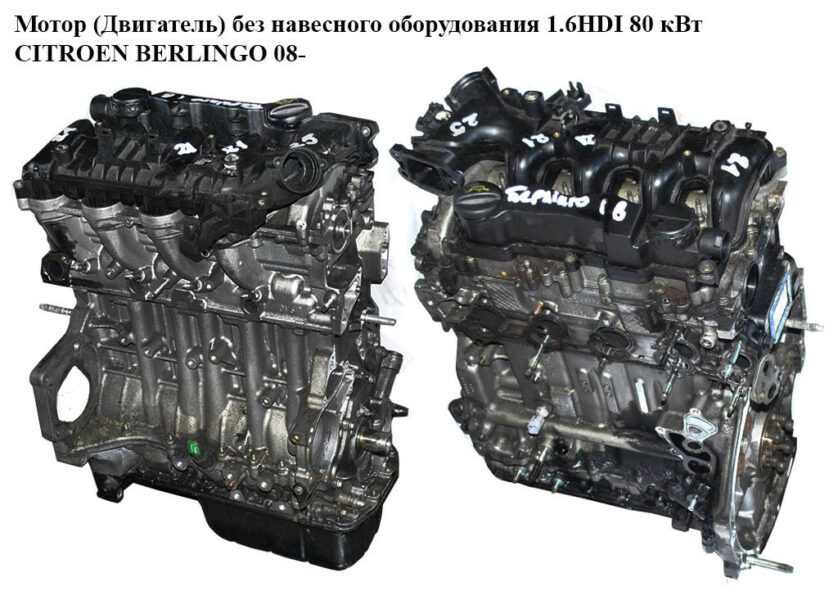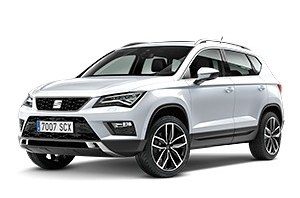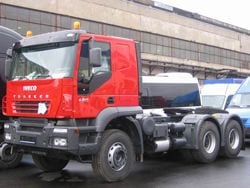
Citroën Berlingo 1,6 HDi (80 kW)
Content
A few numbers ago we published a test of Peugeot's partner, the (re) twin of Berlingo, and already there we found that the brothers in the second generation compared to the first, which is still in (limited supply) sales (Berlingo First), have significantly increased. Anyone not convinced by the sense of adulthood inside Beurling will have to figure out the bare numbers. The novelty is 24 centimeters longer in length, 8 inches wider and 3 centimeters at the crotch.
Because of this, he would have been given a new name, say, Grand Berlingo. Although it differs greatly in design from its successful predecessor, which has sold millions of copies, it ties in with Praberling with the soul of delivery, a square shape with a steep rear and a side sliding door.
It also does not disappoint with the new generation and is considered gold for passengers who want high seats due to (current or future) traffic issues. If someone tripped over a step on the doorstep of their predecessor, getting up from the back bench, the beginner should not have these problems. Side doors (from other Multispace hardware onwards, a pair is standard, otherwise you only get the right one) are worth their weight in gold when you need to stand out in tight parking lots, and every inch counts when you open it.
The tailgate deserves a gold medal because of its size, it opens up a large hole with a low loading area and a giant frameless trunk that our test cases felt like a stockbroker during a recession, and also because when they open, they offer rain is a shelter for people up to 180 centimeters tall and, possibly, will save a family picnic. The fact that not all gold glitters is confirmed by the last doors, when they need to be opened in a narrow parking lot. Hmm, not enough space yet!
Solution? It will need to be thought about before buying and is called an asymmetric rear glazed hinged door. The trunk can be extended by removing the rear seat (or seats), removing only two-thirds or one-third of the bench, allowing one or two passengers in the rear seat to carry up to two meters of cargo. It is a shame that when you remove the back bench (the increase in load is on the "fold back and tilt forward" principle) you need to collect a little more energy, since the bench is too heavy to take it off on a daily basis.
The rear seats are also quite inflexible, considering the "magical" interior of some minivans: the rear Berling seats cannot be moved longitudinally or in the inclination of their backs, as there is enough space in the back. and in front of them and above them. Much in this case is actually a prelude.
Compared to the previous generation, there are many more differences in the front seats, mainly due to the new dashboard, which is almost the same as in real limousines. There's plenty of room up front as well, behind the soft-set and height-adjustable steering wheel it sits high, and the pitch around the front of the body is similar to delivery as well.
Although the Berlingo is almost 4 meters long, we didn't miss out on the rear parking sensors as the straight rear is easy to control thanks to the predominant glass surfaces. You won't notice any sheet metal inside (unlike the Nemo) except for the door frames.
The dashboard is made of hard plastic, which looks exemplary and isn't cheap. On the contrary, playful vents and drawers (especially interesting are the round ones next to the dual-zone automatic air conditioner control buttons, which can be used to store small cans of drinks) give the interior a freshness, thanks to which the variety of drawers, storage space in the door ...) is also very useful. For lovers of forgotten items or contraband: under the feet of the rear passengers there are two more carpeted drawers underneath.
Pssst! The real mecca of boxes allows you to buy an add-on system called Modutop, which installs boxes under the roof, but they have one drawback. Since they are located above the heads of the front passengers and above the seats, their contents are difficult to see. We also recommend installing a box under the trunk roof that can hold up to 10 kg of items accessible from both sides (trunk, rear bench).
The 13-liter box between the seats is also very useful. The Modutop roof also has a ventilation function, which impressed us more than in the test, because on cold days, even after three hours of driving through the slots in the ceiling to the rear passengers, air of the same temperature was not blown (promised in the operating instructions) front passenger.
The front seats are softer, the lever is only five-speed, but, fortunately, in certain proportions (sixth gear is not needed) the gifted transmission is comfortably raised and close to the steering wheel, and the control buttons and the air conditioner opening in the center are already visible. there are buttons for lowering and raising the front window (economy!) and a very useful button for locking the rear (sliding) door and preventing children from opening it.
Pressure gauges will also remind you of those from old Peugeot or. Citroën models and the on-board computer, which otherwise handles all the basic elements, including the display of outside temperature data. As with the partner, we will also criticize Berling for being an agent that discourages the purchase of the ESP stabilization program in base equipment and does not offer it as standard even in the most expensive versions.
Another drawback is the lack of airbags, since only the front ones are installed as standard, and the side and curtains will have to be paid extra! At least Isofix and ABS mounts are standard. Lacking central locking, radio, and air conditioning, the Berling X's entryway is by no means attractive and doesn't deserve a good word.
Divyak doesn't like it: the stabilization electronics re-engage at 50 kilometers per hour (if off), based on the C4 Picasso (obviously fashionable right now for limousines based on minivans, like the Renault Kangoo). Based on Scenic), the large space made is also too softly sprung for fast cornering, and for some it almost bothers longitudinally and laterally. Berlingo is designed to be pampered with its softness, as it proves, even as it drives almost unnoticed by speed bumps.
If your budget allows the most powerful diesel engine, just indulge yourself in it, because the 1-liter HDi, which we tested countless times in Avto magazine in various body styles (PSA and some others), works great. There is enough torque to avoid difficult descents, power too.
Fuel consumption? For travelers, the trip computer promises less than six liters of consumption on Sunday rides in the countryside, while highway collectors on the border with the law will be able to count on less than eight or nine liters. Favorable fuel consumption rounds out the overall Berling phenomenon, which is one of the most rewarding cars on the market.
Face to face. ...
Alyosha Mrak: The new Berlingo is bigger, more comfortable and has better sound insulation, with some hesitation I would say it is more mature in everything. It sits better, the gearbox is better, the materials are more durable (kids!), So we can easily attribute (even) greater usability to it. And this is even nicer. But the price of the new item is also higher compared to its predecessor, so the question naturally arises whether it is that much better than the Berling First, which is still on sale.
Matevž Koroshec: It often happens that a successful model that has become popular with owners does not get an equal successor at the end of its life. We cannot say the same about Berling. Now it has become even bigger, prettier and more useful. There are so many drawers that you probably won't remember them at all, Modutop is a real joy with a roof (not just for kids!). Many things have been improved by the engineers - for example, the materials in the interior, although they still cannot fully compete with cars - and the motorcycle, which made the Berlingo a worthy family car in this area too. It's okay, instead of Berlingo you can now call Bingo.
Mitya Reven, photo :? Ales Pavletić
Citroën Berlingo 1,6 HDi (80 kW) FAP Multispace
Basic data
| Sales: | Citroën Slovenia |
|---|---|
| Base model price: | 17.640 € |
| Test model cost: | 19.920 € |
| Power: | 80kW (109 KM) |
| Acceleration (0-100 km / h): | 12,5 with |
| Maximum speed: | 173 km / h |
| Mixed flow ECE: | 5,6l / 100km |
| Guarantee: | 2 years general and mobile warranty, 3 years varnish warranty, 12 years rust warranty. |
| Systematic review | 20.000 km |
Cost (up to 100.000 km or five years)
| Regular services, works, materials: | 647 € |
|---|---|
| Fuel: | 6.398 € |
| Tires (1) | 1.328 € |
| Compulsory insurance: | 2.165 € |
| CASCO INSURANCE (+ B, K), AO, AO + | 2.400 ( |
| Calculate the cost of auto insurance | |
| Buy up | € 22.003 0,22 (km cost: XNUMX €) |
Technical information
| engine: | 4-cylinder - 4-stroke - in-line - turbodiesel - mounted transversely in front - bore and stroke 84 × 90 mm - displacement 1.560 cm? – compression 18:1 – maximum power 80 kW (109 hp) at 4.000 rpm – average piston speed at maximum power 11,8 m/s – specific power 51,3 kW/l (69,7 hp) s. / l) - maximum torque 240-260 Nm at 1.750 rpm - 2 camshafts in the head (chain) - 4 valves per cylinder - exhaust gas turbocharger - charge air cooler. |
|---|---|
| Energy transfer: | front wheel motor drives - 5-speed manual transmission - gear ratio I. 3,45; II. 1,87 hours; III. 1,16 hours; IV. 0,82; V. 0,66; - Differential 4,18 - Wheels 7J × 16 - Tires 205/65 R 16 H, rolling circumference 2,03 m. |
| Capacity: | top speed 173 km / h - acceleration 0-100 km / h in 12,5 s - fuel consumption (ECE) 6,8 / 4,9 / 5,6 l / 100 km. |
| Transportation and suspension: | van - 5 doors, 5 seats - self-supporting body - front single suspension, spring legs, three-spoke transverse rails, stabilizer - rear multi-link axle, springs, telescopic shock absorbers, stabilizer - front disc brakes (forced cooling), rear discs, ABS, mechanical brake rear wheel (lever between seats) - rack and pinion steering wheel, power steering, 3 turns between extreme points. |
| Mass: | empty vehicle 1.429 kg - permissible total weight 2.065 kg - permissible trailer weight with brake: 1.000 kg, without brake: 750 kg - permissible roof load: 80 kg. |
| External dimensions: | vehicle width 1.810 mm, front track 1.505 mm, rear track 1.554 mm, ground clearance 11,5 m. |
| Inner dimensions: | front width 1.470 mm, rear 1.500 mm - front seat length 470 mm, rear seat 450 mm - steering wheel diameter 380 mm - fuel tank 60 l. |
| Box: | measured with standard AM set of 5 Samsonite suitcases (total 278,5 L): 5 pieces: 1 × backpack (20 L); 1 × aviation suitcase (36 l); 1 suitcase (85,5 l), 2 suitcases (68,5 l) |
Our measurements
| T = 7 ° C / p = 987 mbar / rel. vl. = 67% / Mileage condition: 15.665 km / Tires: Michelin Energy Saver 205/65 / R16 H | |
| Acceleration 0-100km: | 12,5s |
|---|---|
| 402m from the city: | 18,6 years ( 121 km / h) |
| Flexibility 50-90km / h: | 10,2s |
| Flexibility 80-120km / h: | 14,0s |
| Maximum speed: | 173km / h (V.) |
| Minimum consumption: | 6,7l / 100km |
| Maximum consumption: | 7,2l / 100km |
| test consumption: | 7,0 l / 100km |
| Braking distance at 130 km / h: | 63,9m |
| Braking distance at 100 km / h: | 38,8m |
| AM table: | 40m |
| Noise at 50 km / h in 3rd gear | 57dB |
| Noise at 50 km / h in 4rd gear | 56dB |
| Noise at 50 km / h in 5rd gear | 54dB |
| Noise at 90 km / h in 3rd gear | 64dB |
| Noise at 90 km / h in 4rd gear | 62dB |
| Noise at 90 km / h in 5rd gear | 61dB |
| Noise at 130 km / h in 4rd gear | 65dB |
| Noise at 130 km / h in 5rd gear | 64dB |
| Idling noise: | 36dB |
| Test errors: | unmistakable |
Overall rating (301/420)
It is difficult for competitors to compete with it in terms of spaciousness. In all other parts of the score, the Frenchman is at the most average level, which is also confirmed by a very bad four.
Exterior (11/15)
Not the most interesting in terms of design, but a product derived from the delivery brother.
Interior (94/140)
A royal offering of space both front and rear, as well as in the trunk. The air conditioner has too much work to do, especially with the basic version of the pedestrian equipment.
Engine, transmission (45
/ 40)The engine is the right choice, the transmission is better than it was, but still not completely satisfying. The steering mechanism is too artificial.
Driving performance (50
/ 95)The average rating is a reflection of not outstanding driving performance.
Performance (23/35)
There are no records, the performance is satisfactory.
Security (50/45)
Many security devices are sold for an additional fee, and some are not offered at all.
Economy
Economical engine and unsalted price.
We praise and reproach
appearance
utility
open space
side sliding door
the possibility of increasing the trunk
fuel consumption
engine suitability
storage locations
large side mirrors
service intervals
steering wheel too straight
modest standard safety equipment
the tailgate takes a lot of space to open
opening the fuel tank with a key only
installation of a spare wheel under the boot floor (dirt)
heavy back bench (removal)
body tilt in corners
ESP is available at an additional cost.

